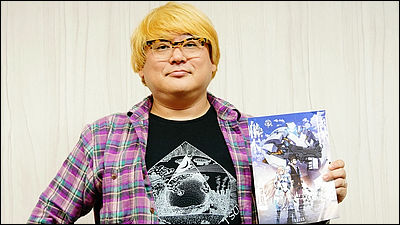'GODZILLA: City on the Edge of Battle' Director Kobun Shizuno and Director Hiroyuki Seshita interview: They are committed to the production to make the story believable

The second chapter of the anime film 'GODZILLA' trilogy, ' GODZILLA: City on the Edge of Battle, ' was released on Friday, May 18, 2018. After fighting Godzilla, who had become the ruler of the Earth's ecosystem in the first chapter, humanity once again turns to Mechagodzilla, humanity's last hope, to fight Godzilla again.
[The second part of the trilogy] Animated film 'GODZILLA: City on the Edge of Battle' OFFICIAL SITE
http://godzilla-anime.com/

GIGAZINE (hereinafter G):
In preparation for this interview, I watched the previews of the previous film, 'Godzilla: Monster Planet,' and this film, 'Godzilla: City on the Edge of Battle.' Since these were work-in-progress versions, there were some parts where the recorded voices had instructions like 'record this later' or 're-record.' This film was done through pre-scoring, but after pre-scoring, at what stage do you decide to add more lines if you feel they are necessary?
Director Hiroyuki Seshita (hereinafter, Seshita):
Compared to the preview version, there are many changes, including the last scene, so I think you'll be surprised when you see it at the cinema (laughs). I'll add a little more detail since the instruction to 're-record' may be a bit misleading. It's not that 'if you do a pre-scoring, you don't have to do dubbing,' but rather, reactions, ad-libs, and especially action scenes with dizzying developments, are all originally planned to be dubbed. In other words, dubbing after pre-scoring is basically included in the schedule as a set.
G:
I see. When will the dubbing take place?
Seshita:
The editing work was completed. However, since the animated film 'GODZILLA' is a complex ensemble drama, there were many things I wanted to do a little more like this (laughs), so I gave a lot of instructions.
G:
Is it the feeling that because you want the story to unfold in a certain way, you should make some corrections or additions here?
Seshita:
In the early stages of development, more than three years ago, Shizuno said, 'I want to bring out the charm of human drama. I want to make a work in which the camera follows the turbulent emotions of the main character, Haruo.' In fact, in the midst of a fast-paced battle scene, it is very difficult to adjust the balance between Haruo and the many characters surrounding him. We worked on this through editing, carefully picking up the emotions. I love Shizuno's raging cutting.

G:
A torrent of cutting (lol)
Seshita:
It's 'a raging wave.' It's just amazing. With each version, the human drama becomes deeper and deeper. In this 'human drama being pushed out,' I thought, 'I want this line,' or 'I want to change this line a little,' one after another.
(Everyone laughs)
G:
Do you discuss things as you work together, like, 'I want to put a line here'?
Director Kobun Shizuno (hereinafter, Shizuno):
I'll do it when I edit it.
Seshita:
No no, Shizuno-san is the one who gives out the ideas. I sometimes (laughs)
G:
Is Director Shizuno the type to be very forthright?
Shizuno:
Consultation galore.
(Everyone laughs)
Seshita:
Shizuno's editing is really good. I would love to be able to cover the editing process.
G:
Do you come up with the changes as you're editing?
Shizuno:
First of all, before editing, I asked Mr. Seshimo to give me a light rub on the editing structure, asking, 'How can we make it more interesting, exciting, and develop it without destroying the goodness of the original scenario?' From there, I would suggest, 'How about this?' and Mr. Seshimo would also give his opinion and we would clash. It was like, 'It would be more exciting if this line was included.'
Left: Director Kobun Shizuno, Right: Director Hiroyuki Seshita
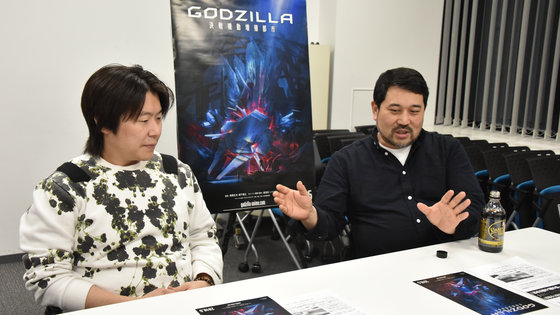
G:
It feels like the two of us are working together to move the story forward.
Shizuno:
Seshita-san is a very trustworthy director, so for example, if I just want to go to the bathroom and I say, 'Excuse me, just a moment,' Seshita-san will continue to take care of me (laughs).
Seshita:
From my perspective, if I leave it to Shizuno-san, it ends up being 'the edit I like'... or rather, it ends up being even better than what I had imagined (laughs).
G:
When the finished product exceeds your expectations.
Seshita:
I really respect him. That's why it's fun to work with him. Speaking of fun, working with Urobuchi-san is also fun. Every time Urobuchi-san comes up with an idea, we're always surprised. Like, 'What?!... That guy can do that?!'
(Everyone laughs)
Seshita:
In terms of dialogue, it is typical of Urobuchi, and the charm of his exquisite phrasing keeps you drawn in.
Shizuno:
I agree.
Seshita:
I'm really having fun working with Urobuchi and Shizuno.
G:
What was your impression when you received and read the script, Director Shizuno?
Shizuno:
At the end of the first chapter, I thought, 'I've come this far...!' (laughs)
G:
(lol)
Shizuno:
In Chapter 2, I thought 'I wonder if Mechagodzilla will appear next,' but then I was like 'Huh, is it XX? Is it more XX?'

Seshita:
The scripts we received were far more than we had expected (laughs).
G:
(Laughs) So, after reading that script that exceeded my expectations, I had to create the work...
Seshita:
For me, I think 80% of a movie is the script, or the story.
G:
80%?
Seshita:
The remaining 20% is half visuals and half sound. I think the most important thing is the story and the script.
G:
'City on the Edge of Battle' is the middle part of a trilogy, but was there any part in which you used your experience making the first chapter, 'Monster Planet'?
Shizuno:
I felt that the speed of the people on-site had increased dramatically. The next footage was coming out at twice the speed of the schedule we had predicted.
G:
Double?! Isn't that super fast?
Seshita:
In the case of CG, if the world view is the same, the more skilled you are, the faster it will improve. That's why the characters' movements are better than in 'Monster Planet.'
G:
Director Seshita was interviewed on the Toei Animation official website ' EE.jp, the latest CG animation on-site information site,' where he said, 'CG has great convenience, such as the fact that the image does not easily break down, the more you make it, the more skilled you become, and the more data is stored in a library, the more cost-effective it becomes.' In that regard, in the case of 'GODZILLA,' is it true that cost efficiency has been achieved by storing data in a library?
Seshita:
I think the efficiency gains are quite large. If you create the same worldview, the more you create it, the more props, sets, characters, and other things will pile up. On the other hand, with CG, the initial 'preparation' is very difficult.
G:
So you're talking about creating assets. I spoke to you about this when 'Monster Planet' was released , but how difficult is it compared to other works?
Seshita:
Hmm... it's hard to put into words... (laughs)
Shizuno:
(lol)
G:
It's hard to put into words (laughs) What did you think, Director Shizuno?
Shizuno:
I don't have much experience working in CG, so I can't really compare, but I think the animators must have had a very hard time because of the sheer size of the 'Godzilla' title, and the things that had to move in the film were very large and futuristic weapons, and the explosions, blast waves, rolling rocks, etc. are beyond what we can actually experience.

G:
You said you had no experience in CG, so I want to ask you a question. In a report about your appearance on the stage at the AnimeJapan 2017 seminar , you wrote something amazing: 'When the mix of hand-drawn and CG animation was starting to become popular, mainly at GONZO, Director Shizuno had an idea: 'If I use CG, I can become an anime director right away.' And so, although he had hardly ever used a PC before, he bought a PC and 3D software all at once. He learned how to use it in about a week, and the following week he submitted a proposal for a 3DCG anime that assumed he would do all the work himself. When his boss saw it, he said, 'If you can really do it all, go ahead and do it,' and the proposal was given the go-ahead, and thus Director Shizuno became an anime director for the first time.' How did you get to the level where you could use 3DCG software in just one week?
Shizuno:
Um (laughs), well... it's pretty normal, I guess.
G:
Just like that! (laughs)
Shizuno:
First of all, I didn't even have a PC.
G:
Eh, so that's where it starts...?
Shizuno:
I was still using an iMac with a 500MHz CPU, and at the time, a mechanical designer who was working at the same company, Makoto Kobayashi, introduced me to STRATA version 1.75. I also got After Effects and Photoshop, and learned how to do things.
Seshita:
Was that when you were with GONZO?
Shizuno:
This was around the time Phoenix Entertainment was producing the OVA 'Giant Robo THE ANIMATION: The Day the Earth Stood Still.'
G:
I see, so during that time you studied all aspects of 3DCG all at once. While we're moving away from Godzilla for a moment, in the same lecture you mentioned an interesting anecdote about your time in America, where you said 'My university arranged for me to stay with a host family, and when I got there, my host family looked after me,' and 'I didn't go to university in America, but instead went to Las Vegas.' What did you do in Las Vegas?
Shizuno:
Las Vegas... back then... I can't talk about that here (laughs).
G:
Since I had the chance, I thought I'd go and see it in person.
Shizuno:
I went to Las Vegas on a Greyhound bus and went to the casino without even getting a hotel room. When I acted like I was having fun, they brought me food and drinks. Also, there were events that you could see for free, like the Mirage show, and I was impressed by those.
Seshita:
It was around 1989 or 1990.
Shizuno:
I went there before I graduated from high school, so I was around 17 or 18 years old. I'm 45 now, so that was almost 30 years ago.
G:
The reason I asked this question is because while many Japanese anime directors have worked on a number of projects as an animator or producer before becoming directors, Director Shizuno's career is somewhat unique.
Shizuno:
In terms of career, Seshita is quite strange.
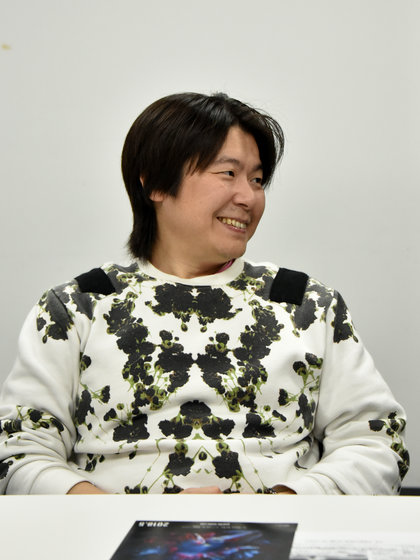
(Everyone laughs)
G:
Director Seshita has given many interviews, including the one mentioned earlier in EE.jp, so we can see how he came to be the director of 'GODZILLA.' However, Director Shizuno has also directed the 'Detective Conan' movies, but he has appeared in far fewer interviews than Director Seshita, so it seems like he has a lot of secrets.
Seshita:
It's a secret (laughs)... In my case, I've been working on CG and visual effects for a long time, and this year marks my 30th year. It's basically CG. So, to be honest, I still don't know much about hand-drawn animation. However, after interacting with people in the anime industry since 'Knights of Sidonia,' I realized that Shizuno doesn't seem like someone from the anime industry.
G:
Also, why do you say you're not from the industry?
Seshita:
In fact, I thought, 'Maybe we were in the same industry' (laughs), because our lifestyles, ways of thinking, and vibes are so similar.
G:
(laughs) I found that I had a lot in common with Seshita-san.
Seshita:
We started working together on Knights of Sidonia, and at the time I wondered how we could suddenly become so comfortable talking to each other and create a work with such a similar feeling. Now, I'm very impressed with Shizuno's perspective, ideas, and sense, as well as the story I mentioned earlier about taking a Greyhound to Vegas.
G:
So, I've been talking about Director Shizuno, but I'd like to go back to a question related to 'GODZILLA'. In an interview with Director Shizuno by 'anisomnia', which no longer exists, some
Seshita:
Yes. I think being systematic is a big factor. In the case of CG, there is a supervisor at each stage of the production process who manages the process. The director shows 'what' - that is, 'what to make,' while the supervisor shows 'how' - that is, 'how to make it.' If we compare it to architecture, the director is the architect and the supervisor is the site supervisor. Architects design, that is, they do the planning, but they don't go to the site themselves to pick up a hammer and hammer in nails. On site, people from various professions - plasterers, plumbers, gas workers, etc. - various people come and go depending on the process, and the site supervisor manages them. We call the person who manages the CG site like this 'CG supervisor.'
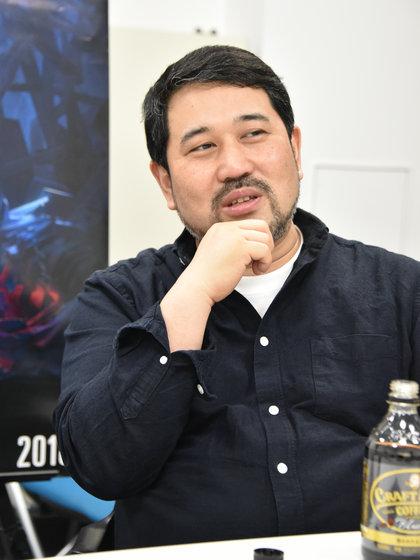
G:
I see, so that's the difference between a 'director' and a 'CG supervisor.' Mr. Seshita, this year marks your 30th year in the CG field, but has your work process changed significantly in those 30 years? Or has the process itself remained the same?
Seshita:
Things have changed a lot, and I think they will continue to change. To give one example of a big change, I think the way we divide work will change rapidly. Things that used to be divided into 10 parts will now be consolidated into about 3 parts.
G:
So instead of dividing things up into small categories, you divide them up into relatively broad categories. Why did you decide to do this?
Seshita:
The biggest advances have been in software and hardware environments, as well as in methods.
G:
Is that in terms of improving efficiency and quality?
Seshita:
That's right. It's exactly the balance between efficiency and effectiveness. To be honest, 'GODZILLA' is the project that I felt was a turning point. Because it is a very large-volume production, we tend to use human wave tactics, but the more people involved, the more difficult it becomes to unify our intentions, which increases the problem.
G:
Does that mean communication is difficult?
Seshita:
That's right. It may seem like a natural thing to do, but it's actually still difficult to standardize things like 'Make this part with this setting' or 'Make it with this policy in mind.' Even if we have a group of amazing artists who are all highly motivated and skilled...
G:
This is what's called 'communication cost.' The larger the organization, the more expensive it becomes.
Seshita:
'GODZILLA' has a grand worldview and many characters. It is a trilogy, and each of the three films has various plot twists and is a large-scale work that is intricately intertwined, so I really thought about whether I should do this with a simple human wave tactic.

G:
In the case of 'GODZILLA,' were there any strategies taken to overcome these issues?
Seshita:
Polygon Pictures has a wealth of experience in mass-producing CG, which is why they are able to produce this level of stability. We may have reached a certain saturation point where simply increasing the number of people will not improve quality or speed.
G:
We have reached the limit.
Seshita:
That's how I honestly feel.
G:
Director Shizuno, is it possible to tell from the outside what kind of atmosphere you're experiencing?
Shizuno:
I believe that the better the work will be if I adapt to the style of the company and let them work in the way they are best at it, so I generally don't interfere with the production process. I just show them what each section has produced according to the set schedule, and that's it.
G:
You are truly devoted to being a 'director.' In one interview, you said that you were surprised when you were correcting a storyboard that had been submitted and someone told you, 'That should go back to the person who drew it.' This seems to be one of the differences between hand-drawn animation and CG animation.
Shizuno:
This is from the time of 'Knights of Sidonia'. In hand-drawn animation, it was the director's job to supervise and correct the storyboards that were submitted, and the unspoken rule was that 'no one other than the director can and will not correct them.' However, at Polygon Pictures, 'If the director sees it and it's no good, the person who drew the storyboard will correct it.' I thought, 'That's certainly true.' Nowadays, there are fewer people who can draw storyboards properly in hand-drawn animation.
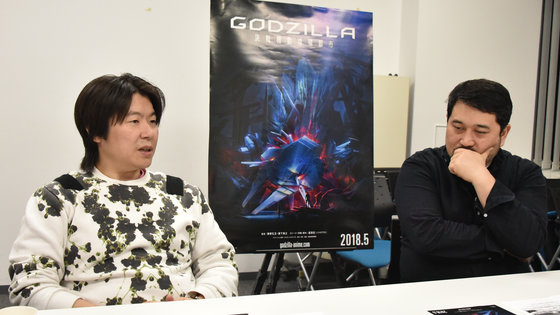
G:
Uh huh...
Shizuno:
If someone doesn't know how to draw a storyboard, even if you send it back saying 'this is no good,' they won't come up with anything good...
Seshita:
This is starting to get a little exciting... (laughs)
Shizuno:
In that respect, Polygon Pictures has come up with ways to improve work efficiency by saying, 'So animation is made using that kind of system. Here's how we'll do it,' and it feels like they are ahead of the curve in areas that the hand-drawn animation industry has not been able to do.
Seshita:
At Polygon Pictures, we put a lot of effort into pre-production, or pre-visualization. For example, when building a house, it's a bit troubling to be shown only the blueprints and told, 'It's like this.' You want to see a model of what it will look like in concrete terms. You don't want to be told to 'imagine' the color and material of the wallpaper; you want to see a sample. The more information you have up front, the more money, effort, and time it will take to plan, but the future is guaranteed and there will be less uncertainty when it comes to making it. In terms of productivity with less uncertainty, I think Polygon Pictures is the best in Japan in the CG animation industry.
G:
oh…….
Seshita:
However, the difficult thing is that, for example, when I was working on 'Knights of Sidonia,' there was a manga original that I could refer to a lot as the basis for the worldview, but 'GODZILLA' was completely original. In times like that, various doubts arise as you create a work, such as the story, worldview, and style.
G:
Do you ever have doubts even though Urobuchi, Shizuno, and Seshita are working together?
Seshita:
Yes (laughs). No matter how much planning goes into it, there are times when there are shortfalls or when you think, 'It should be more like this,' and it's difficult... Polygon Pictures is one of the best in Japan in terms of speed and quality stability when mass-producing. However, when you want to do something a little differently, the scale of mass production becomes a disadvantage. In other words, the larger the truck, the less likely it is to stop immediately when you brake, and it's natural that you can't turn the steering wheel as easily. There were always such difficulties.
G:
If you do the pre-production part properly, does that mean it becomes easier to make corrections?
Seshita:
I guess it's a matter of balancing the schedule and the overall budget. The production period is much shorter than Hollywood productions, so there are often not enough time to spend on previsualization.
G:
For 'Godzilla,' how long did you spend on previsualization?
Seshita:
Of these three and a half years, it was about a year and a half. As expected, it was difficult to make an original work, and moreover, an animated film (laughs), 'Godzilla'. We had the participation of the wonderful creators Urobuchi and Shizuno, but for Toho, Godzilla is a very popular character.

G:
Godzilla, an animated movie, and a trilogy at that...
Seshita:
(laughs) It must have been an incredibly high hurdle.
G:
Finally, I would like to ask you again about what Director Seshita said in his interview with EE.jp. He wrote, 'In theatrical terms, there is a concept called 'breaking the suspension of disbelief.' Whether it's anime, manga, or live-action, I'm sure everyone has had the experience of coming across an instance where they think, 'This protagonist would never say that,' or 'This character would never act like that.' When you're enjoying a work, you don't want to be woken up like that. I just want to pursue to the limit a convincing worldview that makes it seem like 'This protagonist should speak and behave like this,' and increase the work's communication power, as well as the sense of immersion and realism.'
Seshita:
Did you say that? (laughs)
G:
In this 'GODZILLA,' what parts of the story have you 'pushed the world view to its limits'?
Seshita:
It's awkward (laughs).
G:
Is it awkward? (laughs)
Seshita:
'I have to be careful what I say,' I thought.
(Everyone laughs)
Seshita:
If you think, 'This is a lie,' whether it's a play or a movie, the moment you can no longer believe it, you can't get into it. You can't get into the world of the story. Even in a horror movie, for example, if the blood doesn't look like blood no matter how you look at it, the audience will lose interest and think, 'It's just fake,' so I'm particular about the objects that appear in the story. It's a story because it's told with objects. If they say 'an old house' and what comes out is a recently built set, you'll think, 'It's shiny and new.'
G:
I have no choice but to go off topic and make a comment (laughs).
Seshita:
So, even in 'GODZILLA,' every single thing, big and small, prop...even the space suit, 'if it's been drifting for a long time, it's not shiny like a new one, but it's full of scratches,' and I'm pretty particular about whether everything can maintain its persuasiveness within the consistency of the story. ...But, well, as much as possible (laughs)

G:
Why did you suddenly become so pessimistic?! (laughs)
Seshita:
'GODZILLA' is really difficult because it's so epic.
G:
It's made completely from scratch.
Seshita:
There were various reasons for this. In fact, even among the things that Urobuchi and Shizuno mentioned at the beginning, 'I want to do this,' there were a mountain of settings that we couldn't complete in the main movie. These were ultimately used in the novel version of '

G:
Director Shizuno, do you have any particular preferences when it comes to the worldview of your work?
Shizuno:
My preference is 'suspension of disbelief.'
(Everyone laughs)
Seshita:
What Shizuno-san just said about 'suspension of disbelief' is absolutely correct. The preview version you're watching is still in the works, so there are many parts where I think, 'It's strange that Haruo doesn't react here!' That's 'distrust.'
G:
Certainly, the instruction for 'Haruo's reaction' was included. It was 'suspension of disbelief.'
Seshita:
Yes. We want the audience to believe in this story, to be convinced, and not to get bored for even a second - that's what Shizuno-san and I both insist on. That's why we instructed him on 'Haruo's reaction.'

G:
I see. Listening to you talk like this, I feel even more determined to see the finished version at the cinema.
Seshita:
I would be happy if you think so.
G:
I can't help but wonder, 'What on earth is going to happen there?!'
Seshita:
That third chapter was... amazing. Urobuchi-san's development was so surprising that even we were like, 'Huh!?'
G:
Thank you for talking to us for so long today, including topics unrelated to 'GODZILLA.'
Director Seshita said that the film has reached a kind of saturation point, where adding more people will no longer improve the quality, so be sure to check out the footage at the theater to see what it's like.
'GODZILLA: The Final Battle Mobile Multiplication City' Trailer② - YouTube
©2018 TOHO CO., LTD.
Related Posts:


